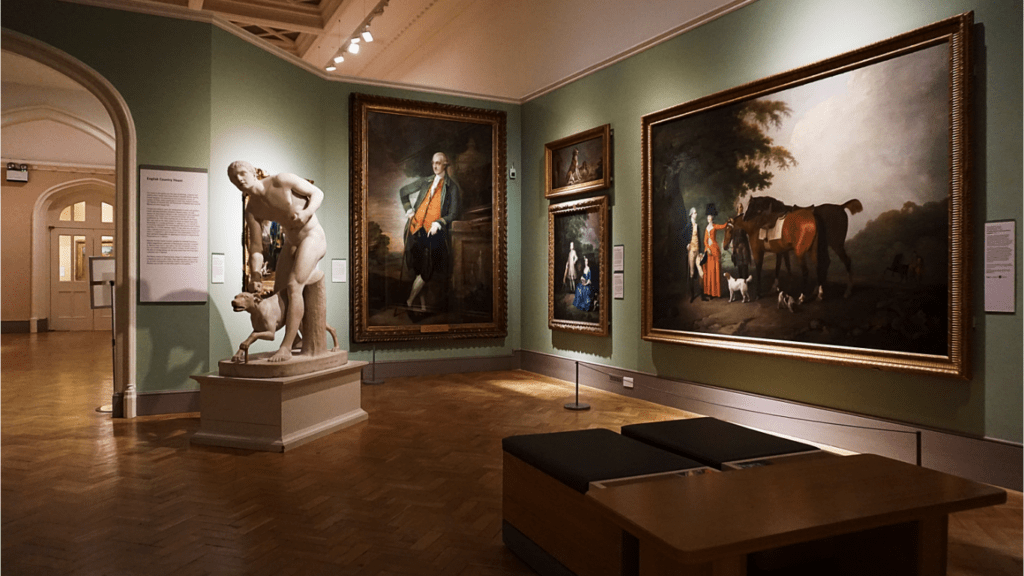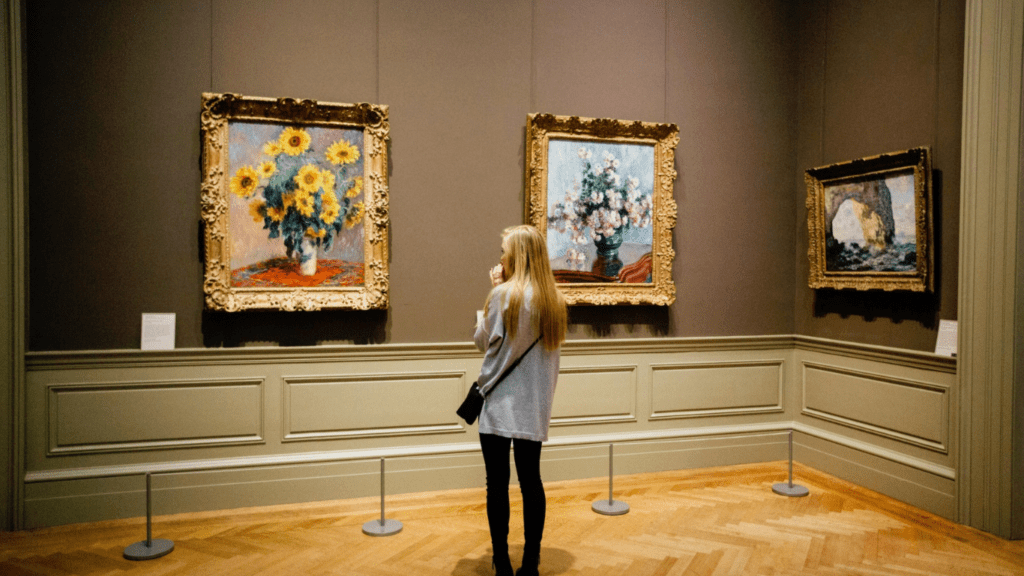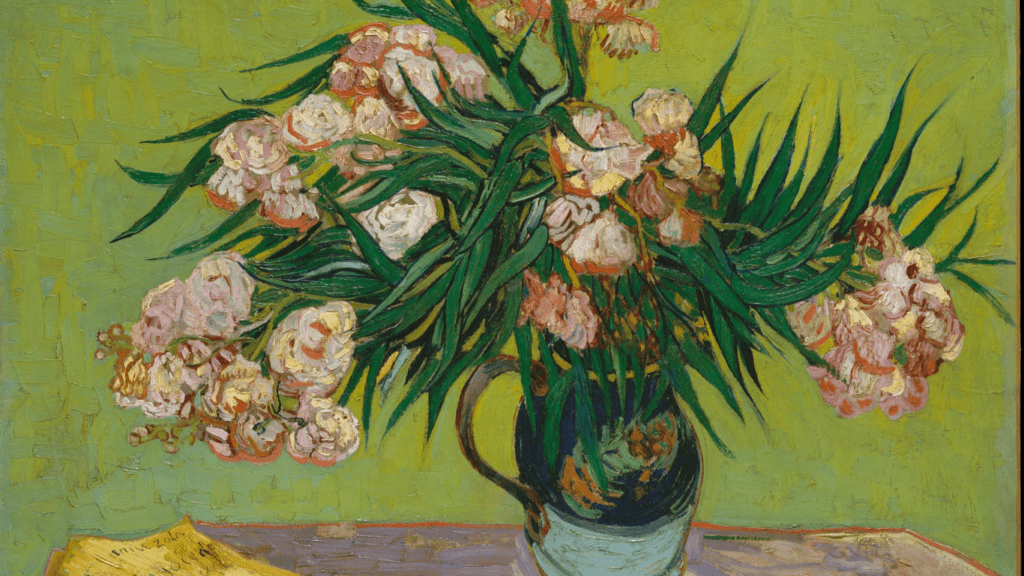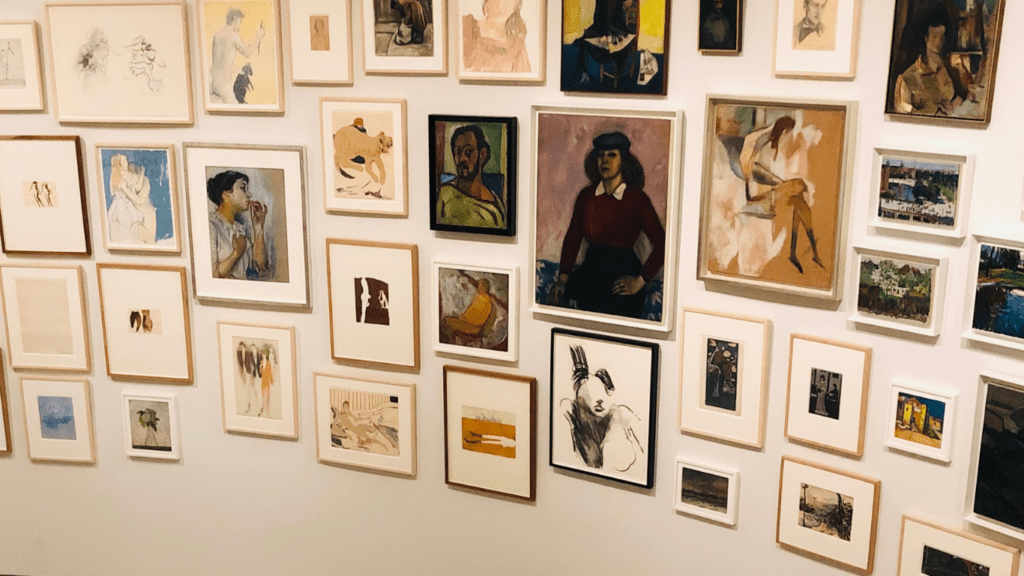Overview of Modern Art Exhibits
Modern art exhibits play a crucial role in showcasing the zeitgeist of contemporary creativity. These exhibits typically feature pieces from the late 19th century onwards, often challenging traditional aesthetics and pushing boundaries. Common themes include abstraction, surrealism, and conceptualism, reflecting the diverse perspectives in today’s art world.
The distinctiveness of modern art lies in its variety. Artists use unconventional materials and methods such as digital media, mixed media, and installations to express their ideas. These exhibits often engage viewers, encouraging interaction and personal interpretation of the artworks on display.
Curating a modern art exhibit involves selecting pieces that represent different movements and styles within modern art. This ensures visitors experience a broad spectrum of contemporary artistic expressions. Collaborating with artists is essential, as it helps to accurately convey their vision and intent.
Given the experimental nature of modern art, exhibit design must be flexible. It should accommodate varied artworks, from large-scale sculptures to intimate video installations. Effective lighting and space planning enhance the viewing experience, making the exhibit visually cohesive and engaging.
Logistical considerations also play a significant role in modern art exhibits. Transporting delicate and sometimes avant-garde artworks requires careful planning and specialized packing. Insurance is crucial to protect these valuable pieces during transit and display.
Modern art exhibits don’t just display art; they tell stories. Each artwork contributes to a larger narrative, offering viewers insights into current social issues, technological advancements, and human experiences. By visiting these exhibits, viewers gain a deeper understanding of the world from the artists’ perspectives.
Modern art exhibits celebrate innovation and push the boundaries of traditional art forms, making them dynamic and thought-provoking spaces for both artists and viewers.
Understanding the Role of a Curator
Curators play a pivotal role in shaping modern art exhibits by selecting artworks and crafting narratives that engage viewers.
Responsibilities and Skills
Curators manage several responsibilities to ensure a successful modern art exhibit. They interact with artists to understand their vision, select pieces that align with the exhibit’s theme, and research historical context. Curators also plan exhibit layouts to enhance visitor flow and engagement. They handle logistics such as transportation, installation, and insurance of artworks. A deep knowledge of art history, strong organizational skills, and the ability to engage with diverse stakeholders are crucial. For instance, collaborating with marketing teams ensures effective promotion while working with conservators guarantees preservation.
Key Challenges
- Curators face multiple challenges in organizing modern art exhibits.
- Balancing different artists’ visions with a cohesive exhibit narrative can be complex.
- Limited budgets often restrict acquisitions and exhibit design possibilities.
- Ensuring the safe transportation and installation of fragile artworks requires meticulous planning.
- Another challenge involves attracting a diverse audience while meeting the expectations of various stakeholders like gallery owners and donors.
- Staying updated with evolving art trends and technological advancements is essential to remain relevant and engaging in the dynamic art world.
The Planning Process

Curating a modern art exhibit involves meticulous planning. Each step, from choosing a theme to selecting artworks, demands attention and expertise.
Theme Selection
Selecting a theme constitutes the backbone of the exhibit. I start by identifying current trends and relevant social issues. For example, a theme could revolve around environmental sustainability, reflecting my commitment to timely and pressing topics. This theme guides the overall narrative and influences the selection of each piece, ensuring a cohesive experience for visitors.
Artwork Selection
Choosing artworks involves a strategic approach. I review artists’ portfolios, focusing on those who align with the exhibit’s theme. Specific pieces are then evaluated for their visual impact, historical significance, and resonance with the chosen theme. For example, selecting mixed-media installations to showcase innovation, or featuring digital art to emphasize modernity. Balancing emerging talents with established names ensures a diverse and engaging exhibit.
Collaborating with Artists
Successful curation hinges on close collaboration with artists. I forge these connections through consistent communication and mutual respect.
Building Relationships
Building strong relationships with artists is essential. I meet them at galleries, art fairs, or studios and maintain open lines of communication. Regular updates on exhibit progress and personalizing interactions help build trust. I also attend their shows and support their work, creating a sense of camaraderie.
Negotiating Terms
Negotiating terms involves aligning the artist’s vision with logistical constraints. I ensure contracts cover artwork transportation, display conditions, and insurance. Payment terms, including commission fees or exhibition payments, are clearly outlined. By respecting the artist’s needs and ensuring transparent dialogue, I foster a positive and productive collaboration.
Exhibit Design and Layout
Designing and laying out a modern art exhibit demands careful planning and attention to detail. Smart space utilization and effective lighting can create an immersive experience.
Space Utilization
Optimizing available space is vital to enhance visitor experience. Each piece of art needs sufficient space to be appreciated individually. Cluster artworks by theme or style to facilitate a fluid visitor flow. Interactive installations require more space and signage to guide engagement. Balance empty areas and filled spaces to avoid overcrowding.
Lighting and Presentation
Lighting significantly impacts how visitors perceive art. Use natural light when possible to highlight textures and colors naturally. Adjustable track lighting allows focus on specific pieces. For sensitive materials, ensure UV filters protect against light damage. Integrate lighting with the exhibit’s aesthetic to amplify the narrative and mood.
Marketing and Promotion
Crafting a successful marketing and promotion plan is essential for modern art exhibits. It’s important to identify the target audience and implement effective publicity strategies to attract visitors.
Target Audience
Identifying the target audience involves understanding who will be interested in the art exhibit. I focus on demographics like:
- age
- gender
- location
- interests
to tailor marketing efforts. For a modern art exhibit, millennials and Gen Z (typically aged 18-35) often show strong interest in contemporary art trends. I also consider art students, local artists, and cultural enthusiasts as key audience segments. Using data analytics tools, surveys, and social media insights helps in developing a detailed audience profile.
Publicity Strategies
Effective publicity strategies ensure the exhibit reaches the right audience. I leverage digital marketing through social media platforms like Instagram, Facebook, and Twitter to engage users with sneak peeks, artist interviews, and behind-the-scenes content. Collaborating with influencers in the art community significantly boosts reach and credibility. Press releases to art magazines and local newspapers generate buzz, while partnerships with local businesses, such as cafes and bookstores, provide additional exposure. Hosting a preview event for media and VIPs also draws attention and creates word-of-mouth promotion.
Opening Night and Beyond
Opening night sets the tone for the entire exhibit. I focus on impactful, memorable experiences that resonate with visitors long after they leave.
Event Planning
Event planning involves meticulous coordination. I identify the key elements—such as guest lists, catering, and entertainment—that align with the theme. Smooth logistical execution ensures attendees enjoy the event without disruptions. For example, securing a renowned DJ enhances the ambiance, while exclusive previews for VIP guests create excitement.
Visitor Engagement
Engaging visitors continues beyond opening night. I implement interactive elements like QR codes for detailed artwork information and virtual tours for remote attendees. Social media campaigns encourage visitors to share their experiences, amplifying the exhibit’s reach. Feedback collection, through surveys and comment kiosks, helps refine future exhibits based on visitor insights.





